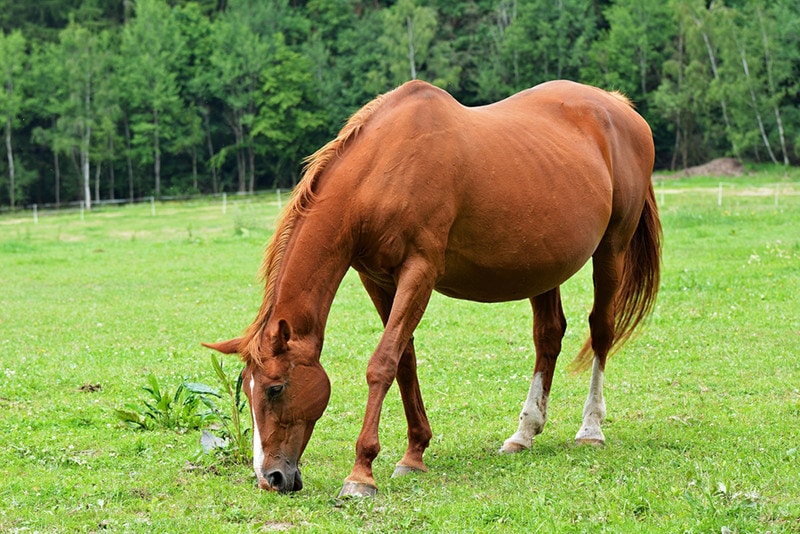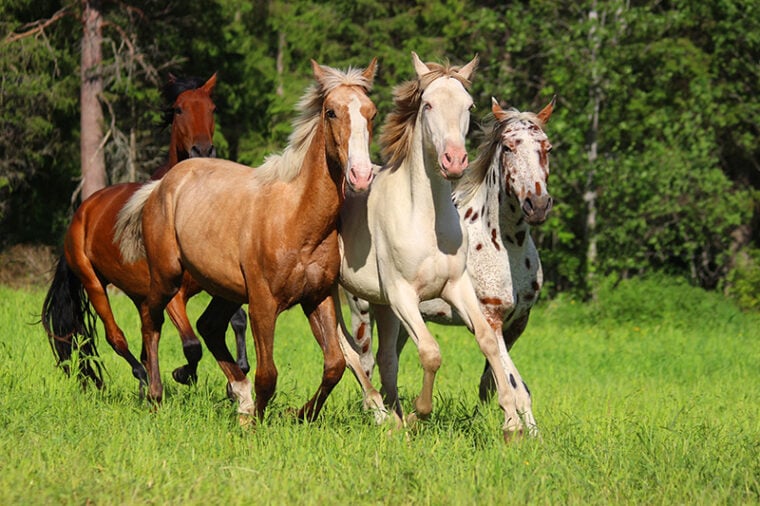
Despite the wide array of horse colors and markings, they are all made up of a combination of just two basic pigment colors: black and red. Different genes can modify or dilute the colors, and the different levels of these two pigments ultimately determine the color of a horse. Despite there only being two color pigments, there are a lot of different colors and coat patterns present in horses.
Below, we have listed the most common horse colors.
The 29 Most Common Horse Colors & Patterns
1. Appaloosa
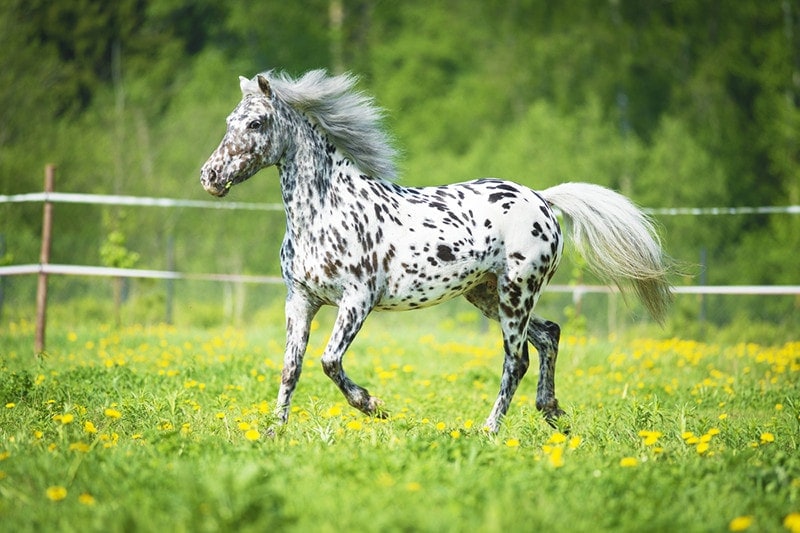
Strictly speaking, Appaloosa is a breed of horse, rather than a coat color. But, Appaloosas do have distinct markings with dark spots on a white background. There are different varieties of Appaloosa markings.
2. Blanket Appaloosa

A blanket Appaloosa typically has a dark body except for a white blanket over the rump. The rump has dark spots of the same color as the rest of the body.
3. Snowcap Appaloosa

A Blanket Appaloosa that has a white blanket on the rump, but with no dark spots on that blanket, can be referred to as a Snowcap Appaloosa because it looks like a snow-capped mountain.
4. Leopard Appaloosa
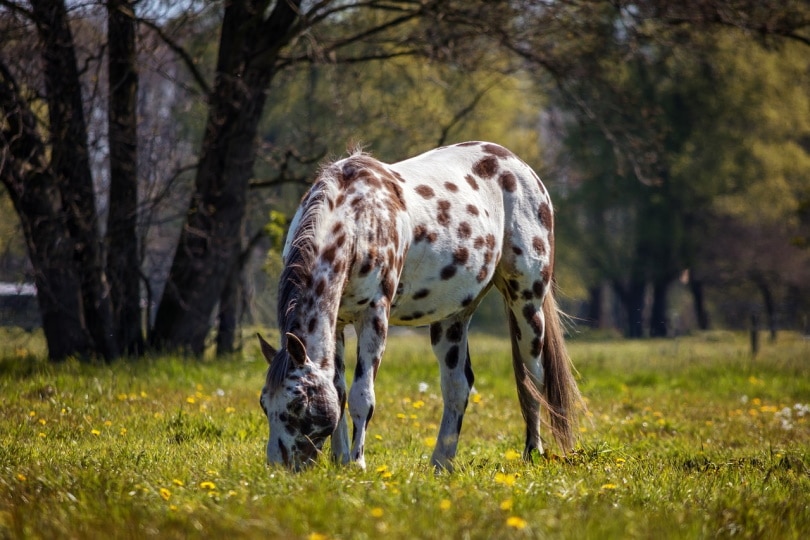
The Leopard Appaloosa has a white body with dark, leopard-like spots. This pattern runs across the whole body, rather than just on the rump.
5. Frost Appaloosa

The Frost Appaloosa’s markings are a little different. They have a dark base coat with white hairs across the body, giving them the appearance of being covered in frost.
6. Bald Face

A bald face marking means that the horse has a white covering across its face. The covering must run at least from eye to eye and give the appearance of a mask. The base coat of the horse can be any color but the white mask is most prominent when set against a darker coat color.
7. Bay

The bay coloring is the most common horse color. A horse with bay markings has a brown coat with dark, typically black, color points at the tail, muzzle, mane, and lower legs.
8. Dark Bay

Dark bay markings occur when the base color of the horse is a very dark brown, seemingly almost black, so that the color points appear lighter than the rest of the coat.
9. Black
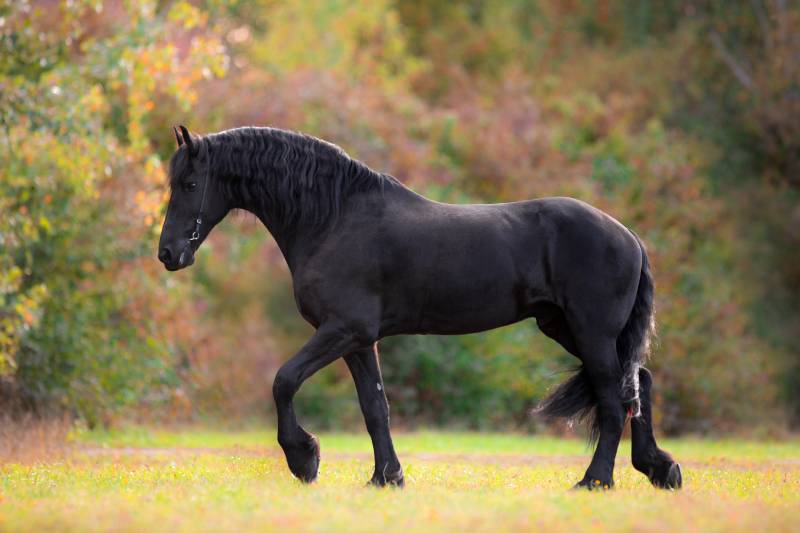
Black horses are considered uncommon but are not as rare as some other patterns. A true black horse not only has a black coat and black points but also has black skin. There shouldn’t be any brown or other colored patches on the coat.
10. Brown

Brown horses are common. They have brown coats and brown points but may also have some different colored brown and even red patches on their coats. These patches are most commonly seen around the eyes and on the muzzle.
11. Buckskin

Buckskins have golden coats with black points and are often confused with dun horse colors. The buckskin can also have a dorsal stripe down the back.
12. Chestnut
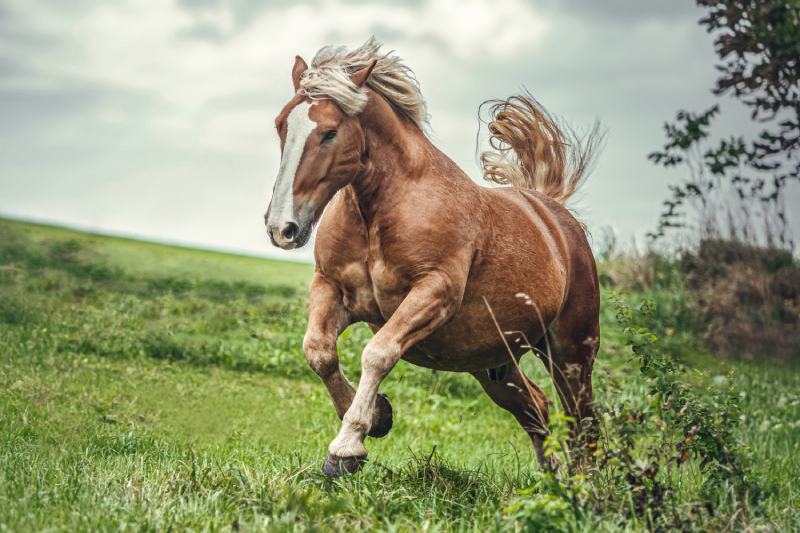
Chestnut is one of the base colors when it comes to horse markings. A chestnut horse has a red coat. Its tail and mane are usually lighter, but a chestnut horse will not have different colors on the legs or other points. The chestnut can range from light to dark.
13. Dun
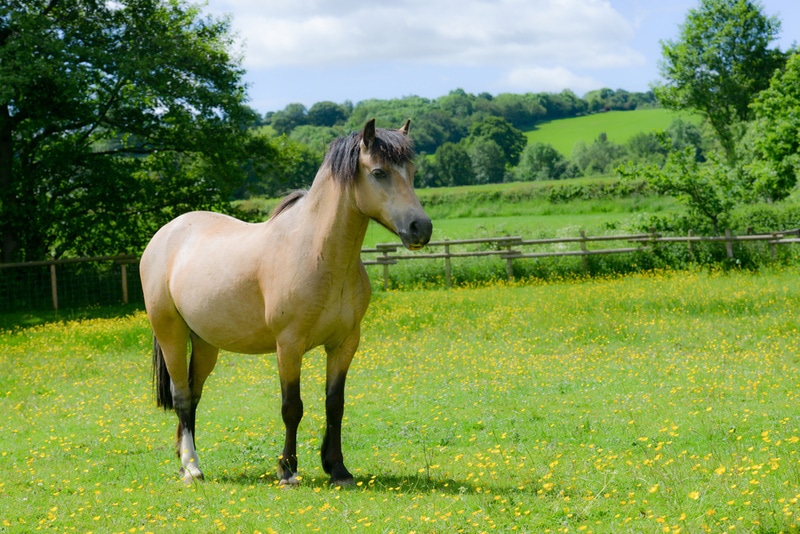
Duns are tan in color and have black points on their ears and legs. They also have dorsal stripes and may have zebra markings, which are horizontal stripes on the legs.
14. Gray

Gray horses can appear to have white coats, but they have to have black skin to be considered a true gray. This combination of light coat and black skin gives them a gray color. Many grays are born a dark gray, almost black, and lighten as they age. They can have darker color points too.
15. Dapple Gray

Dapple is a pattern that can occur in any coat color but is easily recognized and commonly seen in gray horses. A dapple gray has a grey coat with lighter dappling. The dappling pattern covers circles or dots across the coat.
16. Flea-Bitten Gray

While the dapple pattern can occur on horses of other colors, the flea-bitten pattern is unique to gray horses. The light coat of the horse contains black or red speckles. Typically, flea-bitten gray horses started out with a dappled gray pattern when they were young, which changed to a flea-bitten pattern when they got older.
17. Grullo

Grullo coloring is sometimes referred to as gray dun or mouse dun. It arises as a result of dun coloring over a black coat. It has gray hairs on the coat. There are dorsal stripes and black stripes on the legs.
18. Liver Chestnut

Often confused with brown coats, liver chestnut coats are very dark chestnut coats. The mane and tail are the same shade of red as the rest of the horse.
19. Overo

The overo markings can occur on coats of any color. They are identified by a white underbelly with white patterns on the head and legs. The overo also has one blue eye.
20. Palomino

Palominos have golden coats and cream-colored tails and manes. The gold can range from light cream to a richer, darker almost yellow color.
21. Pinto

A horse with pinto markings has white splashes all over the body. The rest of the coat can be any other color. The amount of white on the body determines whether a pinto is considered overo, tobiano, or sabino.
22. Roan
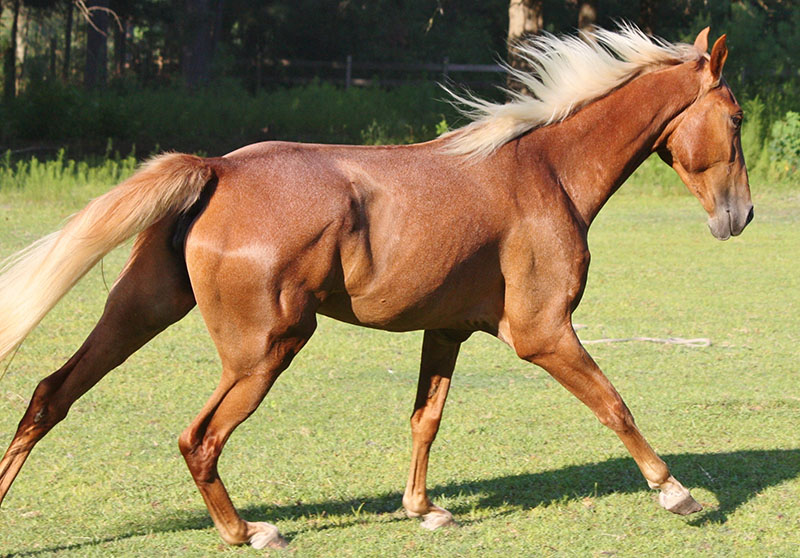
A roan coloring means the horse has a dark coat with lighter white hairs throughout the body. A blue roan has a black coat with white hairs. A red roan has white hairs on a brown coat. A strawberry roan has a red coat and individual white hairs.
23. Snip

A snip is a very specific white marking that can be found on virtually any type of horse and color of coat. It refers to a small white patch on the nose or lip of the horse.
24. Sock

Similarly, a sock is a specific marking that can occur on many horses. It means that the lowest section of the leg is white colored and looks like the horse is wearing a white sock.
25. Sorrel

Sorrel is a particular color of chestnut horse. It is a very light chestnut, almost a yellowish red in color. A sorrel may have a blonde mane and tail.
26. Splash

Splash coloring means the horse has a darker color coat with white on its head, bellies, and legs. They also have blue eyes.
27. Star

A star is a white marking located on the forehead. This marking can occur on horses with coats of almost any color.
28. Stocking

While a sock is a white marking on the lower section of the horse’s leg, a stocking runs higher up the leg. It is white and it can be found on various colors and patterns of horses.
29. White

Although white markings are fairly common in a lot of breeds and patterns, true white horses are very rare. They have white coats and unlike gray horses, they have either pink or brown skin underneath.
Conclusion
Although there are only two pigment colors present in horses, red and black, these can combine in a variety of ways, along with certain pigment mutations, to create a wide variety of markings, patterns, and colors. Above, we have listed 29 horse colors, patterns, and markings, to help you identify horse patterns.
See Also:
Featured Image Credit: SunnyMoon, Shutterstock




